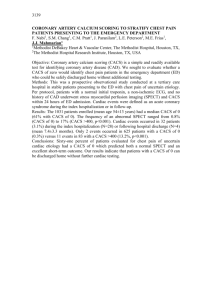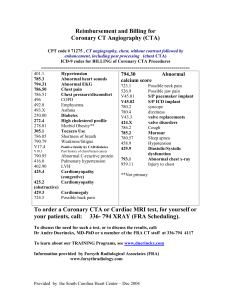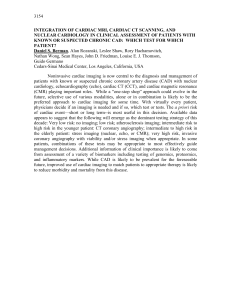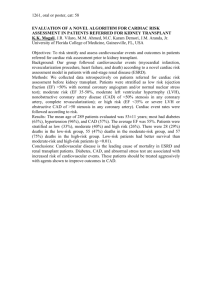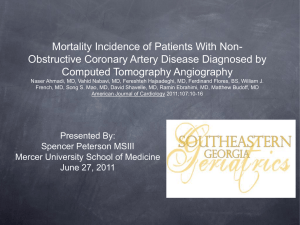evaluation of chest pain in the emergency
advertisement
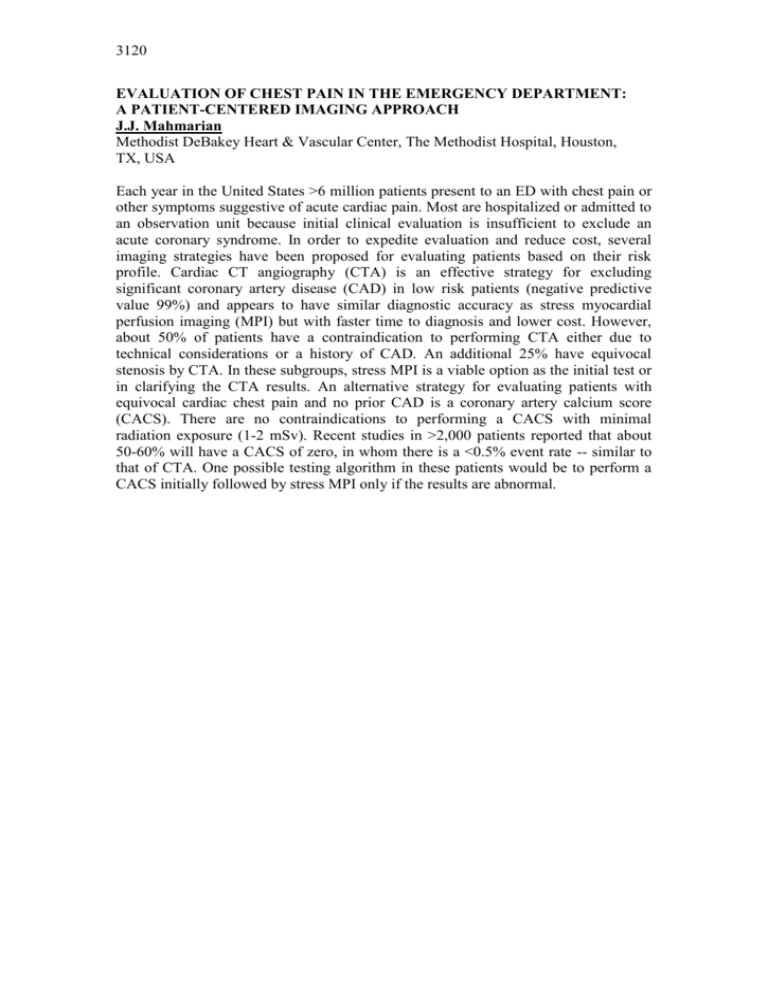
3120 EVALUATION OF CHEST PAIN IN THE EMERGENCY DEPARTMENT: A PATIENT-CENTERED IMAGING APPROACH J.J. Mahmarian Methodist DeBakey Heart & Vascular Center, The Methodist Hospital, Houston, TX, USA Each year in the United States >6 million patients present to an ED with chest pain or other symptoms suggestive of acute cardiac pain. Most are hospitalized or admitted to an observation unit because initial clinical evaluation is insufficient to exclude an acute coronary syndrome. In order to expedite evaluation and reduce cost, several imaging strategies have been proposed for evaluating patients based on their risk profile. Cardiac CT angiography (CTA) is an effective strategy for excluding significant coronary artery disease (CAD) in low risk patients (negative predictive value 99%) and appears to have similar diagnostic accuracy as stress myocardial perfusion imaging (MPI) but with faster time to diagnosis and lower cost. However, about 50% of patients have a contraindication to performing CTA either due to technical considerations or a history of CAD. An additional 25% have equivocal stenosis by CTA. In these subgroups, stress MPI is a viable option as the initial test or in clarifying the CTA results. An alternative strategy for evaluating patients with equivocal cardiac chest pain and no prior CAD is a coronary artery calcium score (CACS). There are no contraindications to performing a CACS with minimal radiation exposure (1-2 mSv). Recent studies in >2,000 patients reported that about 50-60% will have a CACS of zero, in whom there is a <0.5% event rate -- similar to that of CTA. One possible testing algorithm in these patients would be to perform a CACS initially followed by stress MPI only if the results are abnormal.

